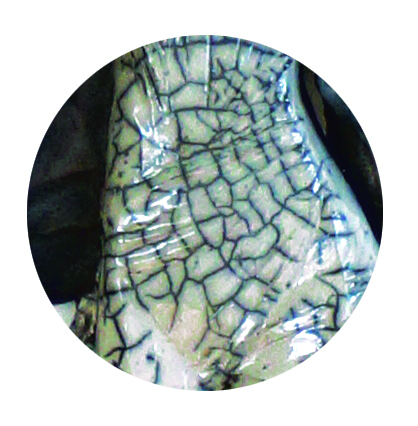Raku ceramics
Raku, a ceramic enameling technique, originally from Korea, was developed and institutionalized in Japan in the 16th century. Earth, air, fire and water express their natures simultaneously under the fundamental constraints of the firing process, conferring infinite variation, and making each piece unique.
This rapid firing technique subjects the clay to temperature extremes, due to extracting an incandescent piece from the kiln, to undergo immediate cooling in the open air. A piece may be smoked, soaked in water, burned or left in the open. The pieces are hardened at 800°to 850° Celsius. The enamel (watertight colored varnish)is fired between 820° and 980° C for one to two hours. Weather conditions may provoke thermal shock due to unforeseen temperature variations: suddenly dropping from 900° to 20° C or less. Then the piece is immediately covered with flammable material, such as sawdust, and enclosed in an airtight container. During this smoking stage the characteristic cracks and carbon blackening occur.

This technique flourished in 16thcenturyJapan, during the Sengoku period. The encounter between Chōjirō a Japanese potter and Senno Rikyū, master of the tea ceremony, led to innovations developed from the original Korean technique, dedicated in particular to tea bowls. The technique was passed down within the Raku family for nearly 450 years. The tea ceremony (chanoyu) is similar to the Zen Buddhist ceremony, derived from the esthetic criteria of kanso, simplicity, funkinsei , irregularity and shizen, naturalness – concepts foundin contemporary references to the simplicity of wabi-sabi, encouraging are turn to natural origins.
Present-day raku adapts traditional Asian techniques to contemporary art. Western methods, exploiting the serendipitous effects of smoke have never been applied in Japan.
